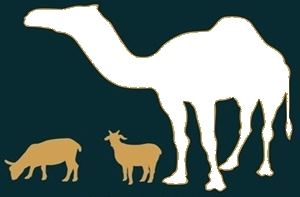La dynamique folliculaire et son importance dans le transfert des embryons chez le dromadaire (Camelus domedarius)
Résumé
Les performances de reproduction du dromadaire en élevage pastoral sont généralement faibles. La caractérisation de la dynamique folliculaire est essentielle pour l’amélioration des performances de reproduction et l’établissement de protocole d’utilisation des techniques de reproduction assistée, telles que le transfert des embryons et l’insémination artificielle. Cet article est une synthèse de nos connaissances sur le développement des vagues folliculaires au cours du cycle et les techniques de contrôle de l’ovulation chez le dromadaire. L’article résume également les défis liés au transfert d’embryons frais ou congelés chez des receveuses synchronises ou non-synchronisées aux donneuses
Mots-clés: Ovaires, dynamique folliculaire, vagues folliculaires, ovulation, transfert d’embryon, dromadaire
Téléchargements

Téléchargements
Publié-e
Comment citer
Numéro
Rubrique
Licence

Revue Marocaine des Sciences Agronomiques et Vétérinaires est mis à disposition selon les termes de la licence Creative Commons Attribution - Pas d’Utilisation Commerciale - Partage dans les Mêmes Conditions 4.0 International.
Fondé(e) sur une œuvre à www.agrimaroc.org.
Les autorisations au-delà du champ de cette licence peuvent être obtenues à www.agrimaroc.org.

